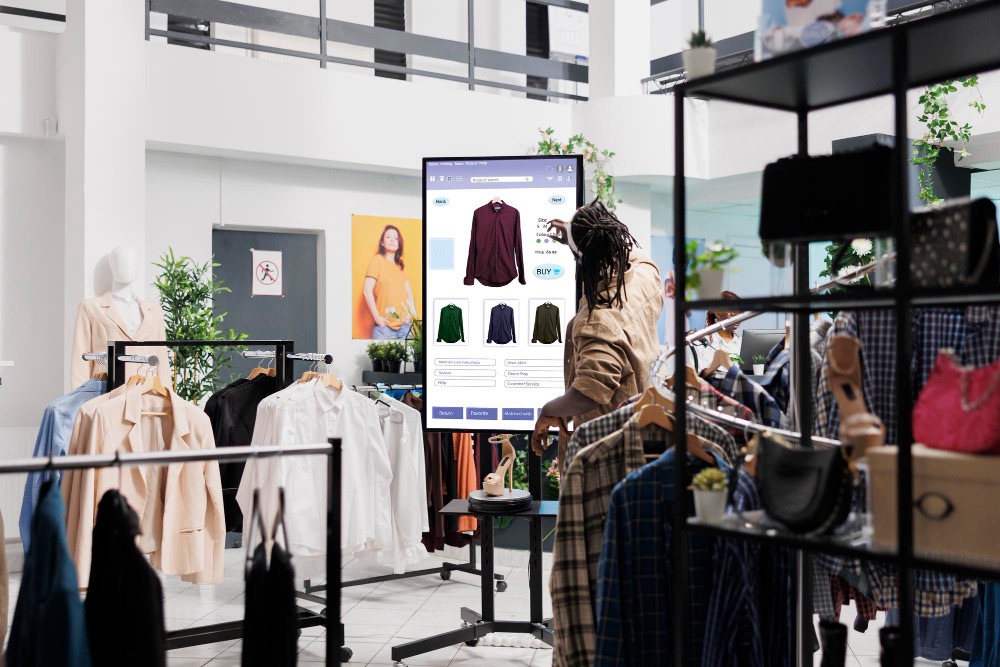In recent years, people have increased their expectations of retail businesses, wanting them to have attributes like efficiency, agility, and speed. To keep up with consumers’ demands, retail companies need to find new ways to improve people’s experiences, and investing in technologies has proved to be the best solution so far. So, by leveraging technologies, retail businesses have the opportunity to enhance the shopping experiences of modern consumers.
The integration of technology in retail has empowered consumers to make more informed decisions. It has also aided business owners in improving their operations, reducing costs, and gaining a competitive edge over other businesses. So, do you want to know how technology improves the retail industry? If the answer is yes, let us show you all the advantages technology brings.

Improves inventory management
With the help of technology, retail owners have the best insights into their inventory, which will minimize losses, optimize their stock, and reduce the chances of overstocking. Now, an inventory control system has become the new norm that retail businesses worldwide use to let them know better what they have.
Inventory control management is always a good idea, as it automatically updates the database the moment a consumer makes a purchase or when a product is moved from one location to another, like when the product leaves the warehouse to go to the store. Plus, online inventory management will improve efficiency, as retail companies can see exactly what they have in stock and always take the necessary steps to avoid running out of something.
Enhances safety for employees
Technology is great for businesses worldwide that want to improve their workplace safety. This is why employers can now invest in wearable devices and monitoring systems to prevent injuries and accidents. This also applies in retail, as with the help of technology, a lot of businesses can streamline their operations, which will replace the demanding tasks of employees. Employers must always offer a safe workplace; otherwise, they risk hurting their workers. If an employee is injured at the workplace, he has the right to file a personal injury claim to receive compensation for this happening. You can find more information at https://www.personalinjuryclaimsuk.org.uk/.
Leads to a better customer satisfaction
With the help of technology, retail businesses can interact more easily with their customers, offering a seamless experience. Innovations such as digital signage, interactive displays, and smart mirrors greatly improve people’s experience, increasing the chance that they will buy from that brand. With the help of technology, retailers can streamline business operations, boost efficiency, and personalize their interactions with customers.
For example, technology has enhanced the convenience of customers and offered them more efficient and smoother shopping experiences. Now, customers can download apps to browse the products they want to buy, check if they are in stock, and then place an order anytime and anywhere they prefer. In this way, their experiences are greatly enhanced, especially if we compare this experience with the regular one, where customers need to go to a physical store and spend many hours seeing all the products a brand has. Plus, with the help of these technologies, they can also track their orders and set personalized alerts that will let them know when a product they are interested in returns in stock.
Introduces personalized offerings
Retailers can attract more customers if they have personalized offerings, which will enhance the experience of consumers. Retail businesses can provide a customized experience that clients would really enjoy by browsing history and looking at past purchases. A good example of a retail business that has improved customer satisfaction is Sephora, which has started to use a Virtual Artists app so that customers will receive makeup recommendations based specifically on their facial features and preferences.
In 2024, many trends will be present in retail personalization, such as hyper-personalization, allowing brands to offer better recommendations tailored to clients’ needs, behaviors, and preferences. In addition, the personalization will go beyond just offering recommendations, as it will continue in pricing, content, promotions, and messages.
Streamlines checkout
You probably know how tiring and tedious it is to wait in a long queue, and because of that, consumers might decide to place their items back and not buy anything. However, things have improved a lot with the help of technology, as retail businesses have streamlined the checkout processes, which is great for all the customers who are not in the mood to wait for a couple of minutes or are in a rush. Now, with the help of self-checkout kiosks, they can benefit from an efficient and smooth checkout experience. Amazon has pushed things even further, as it has introduced cashier-less stores, and clients are able to pick up items and then leave the store, as all the purchases will be charged automatically from their accounts.
Brings Augmented Reality (AR) in retail
With the help of technology, customers can also have more immersive experiences with AR, which can revolutionize how people shop forever. For instance, in fashion stores, brands can integrate AR mirrors so that clients can try on their clothing articles virtually. This improves their experience greatly, as they will not need to change. Additionally, this could save a lot of time, as individuals will know faster if they want to buy that product or not.
In the home décor and furniture industry, AR will help homeowners see how particular pieces will look in their houses so that they can make the right decision.
Wrapping up
With all the advancements in technology, the retail sector will surely transform massively in the future, offering experiences for customers that they haven’t even imagined up to that moment. This is why all retail businesses should consider integrating technology into their operations, as this way, they will meet the demands of the consumers and have a massive competitive advantage.



















